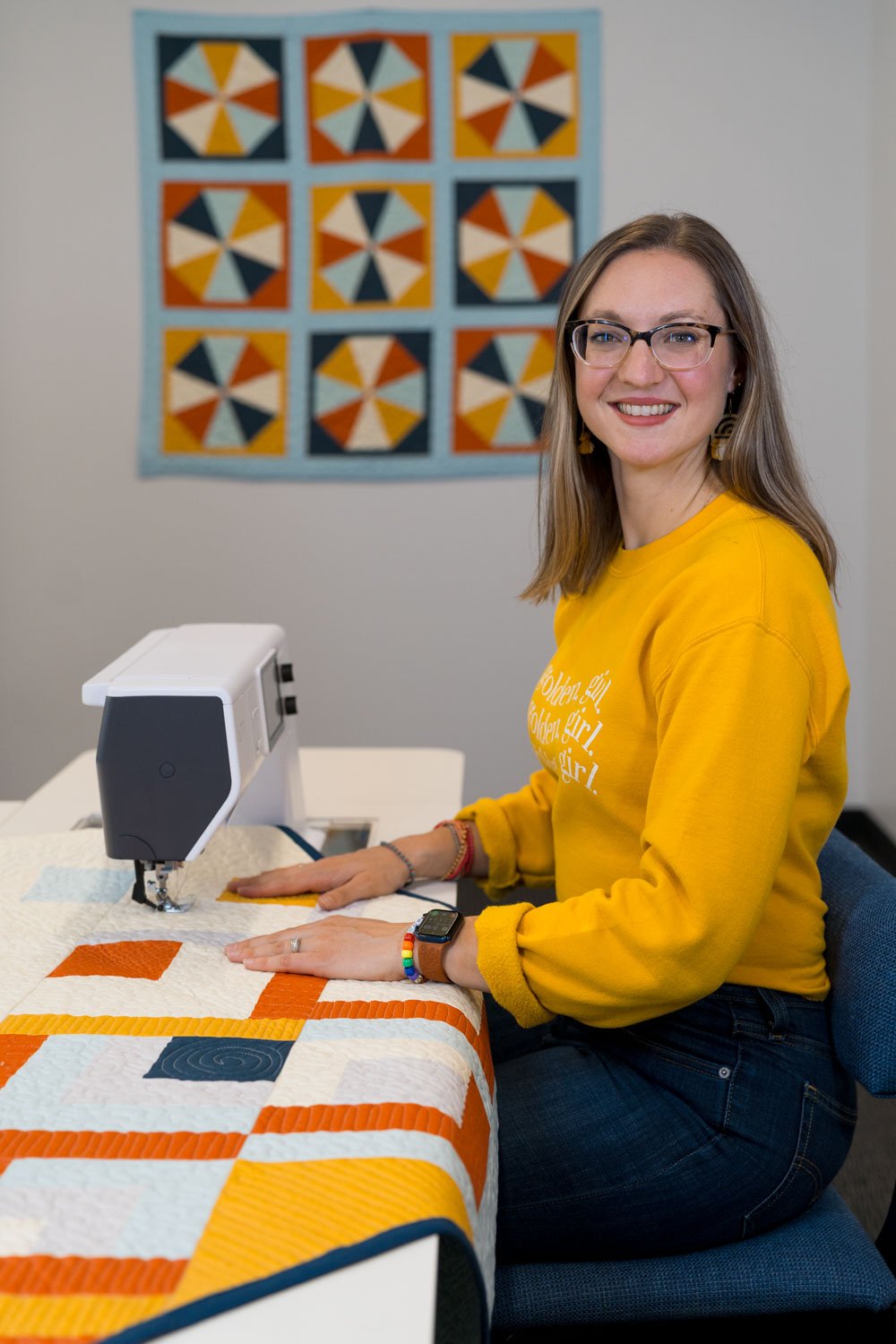Supplies for Free Motion Quilting & Ruler Quilting
Free Motion Quilting and Ruler Quilting are both fun and economical ways to finish your own projects. However, a common misconception is that quilting requires a big machine and lots of fancy supplies. In reality, you probably have most of the supplies you need to finish your own quilts already. Let’s take a look!
(This post may contain affiliate links)
I am so excited that you want to finish your own quilts! I remember my early experiences quilting and discovering that most folks send their quilts out for longarming. We didn’t have enough money for me to pay for quilting, and the process looked so fun. I marched into a local shop and asked for a hopping foot– they were not too impressed that I only had a lil’ “Kenmore like the washing machine” sewing machine. But I was thrilled to find that hopping foot was only $10, and I was off to the races! Today, I want to dispel any anxieties you have about gathering your supplies to quilt your own projects and get you started quilting like a Rockstar!
Supplies for Free Motion Quilting & Ruler Quilting
You probably already have most of the supplies you need to successfully FMQ or ruler quilt. Here’s a full list of my recommended tools & notions, with handy links.
Sewing Machine: Begin with the machine you already own. Make sure the bobbin race is cleaned and that your machine is freshly oiled per the manual or your dealer’s instructions. I highly recommend an extension table if you don’t have a table your machine sinks into, like the Arrow Kangaroo.
FMQ Foot or Ruler Foot: For free motion quilting, a simple hopping foot will do the trick. A universal hopping foot that fits most machines is remarkably affordable. For ruler quilting, you’ll want a round, metal ruler foot with tall sides to prevent the ruler from sliding under the needle. You’ll most likely need to purchase a ruler foot from your sewing machine dealer.
Quilting Rulers: (For ruler quilting only) You’ll want a straight edge ruler for sure, for stitch in the ditch, grids, echoes, etc. A ruler with multiple curves or shapes like the Quilting Rockstar Ruler is a perfect next step.
Needles: I use a simple Schmetz Universal needle, usually size 16 or 18 (if there’s a lot of seams).
Thread: Use fine cotton thread for quilting that sinks like butter into your quilt top, even if you quilt very densely. Aurifil 50 wt is my favorite!
Practice Sandwiches: This is a great use for old stash, muslin, big scraps, etc. Sandwich batting between two pieces of fabric to be able to practice your motifs on something other than your quilt top.
Quilting Gloves: Gloves reduce hand strain by increasing your grip on the quilt. The best ones, like these Swan Amity Gloves, also help prevent hyperextending your fingers by providing palm padding. Gloves also prevent hand oils, dirt, snack crumbs, etc from smudging on your quilt.
Paper & Pen: Practice makes progress, and the most portable and affordable way to practice your quilting is on paper with a pen!
A Note About Your Sewing Machine
The best sewing machine to learn how to free motion or ruler quilt is the one you already have. There are enough mental and emotional road blocks to overcome when you are learning a new skill, and putting the pressure of an expensive machine purchase on this process is just too much. Once you’ve mastered the basics, you may find it is worth investing in a larger domestic machine or a longarm– and I’ll be happy to write you the “permission slip” then if you need it. But I learned how to FMQ (and then taught Free Motion Quilting Academy for several years) on a hand-me-down Kenmore and then an affordable Singer with a 5 1/2 inch throat. Committing to regular quilting practice is a bigger game changer than any special machine.
Closing Thoughts
Even if you only finish some of your projects on your home machine, you can significantly reduce your longarm quilting expenses (I charge $70 USD for just a meander on a 48 x48 quilt) and significantly increase your joy units (The “OMG I did that!” factor is real!). Contrary to common belief, you don’t need a fancy machine or fancy supplies to successfully finish your own quilt. Investing in a few quality items, plus a sense of determination and adventure, will allow you to quilt your projects exactly as you envision– whether you prefer a simple, all-over design or the most complex quilting imaginable!
Resources
COURSE: Intro to Free Motion Quilting (on demand)
COURSE: Free Motion Quilting Academy & Ruler Quilting Academy (enrolls several times each year)
COURSE: Longarm Preparatory (for new & nervous longarm quilters)






